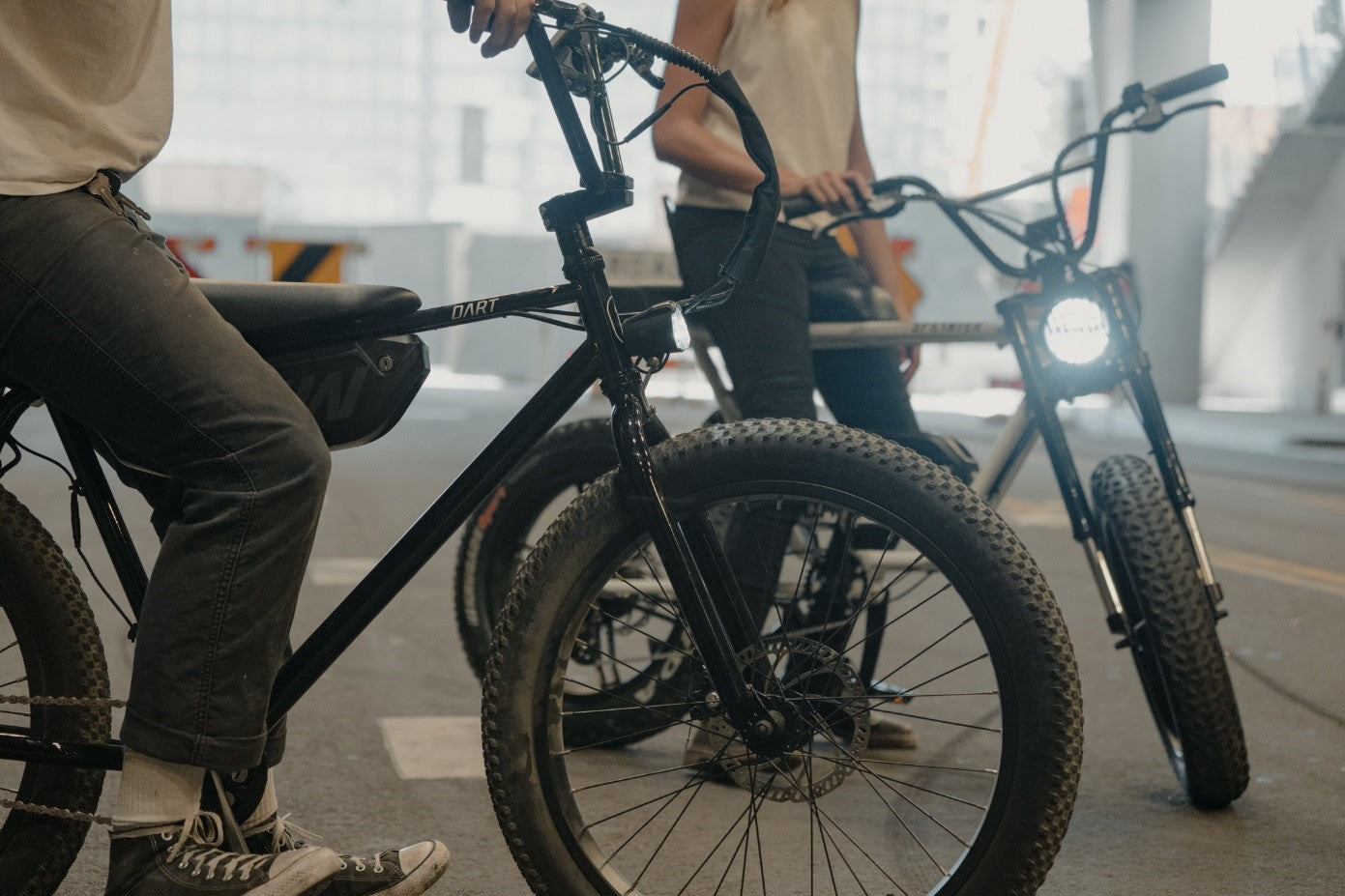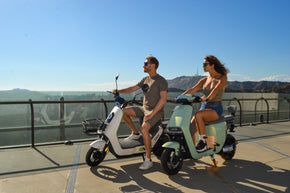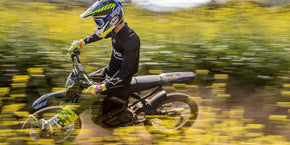
A Beginners Guide to E-Bikes
What is an E-Bike?
Go further and do more than you previously thought possible. E-Bikes or electric bikes are simply standard bikes with the addition of an electric motor, battery, and controller. E-bikes are available in the same categories as traditional bikes such as mountain, road, city, and cruisers. Depending on the type or class of e-bike, the rider will need to pedal for the motor to aid in going faster and further than a standard bike. This extra boost can help riders commute further, zip up hills, and conquer trails that were previous out of reach.

The Three Classes of E-Bike’s
Class 1: Class 1 E-Bikes have a limited top speed of 20mph, and only offer a pedal assist motor. You can ride these on city streets, bike paths, and even some mountain bike trails.
Class 2: Class 2 E-Bikes also have a top speed of 20mph, but usually come with a throttle as well as pedal assist motor. Typically, these bikes are allowed to be used in the same places as Class 1 E-Bikes.
Class 3: Class 3 E-Bikes are typically pedal assist only but have a top speed up to 28mph. Class 3 E-bikes are great for City streets but are usually not allowed on bike paths or trail systems.
Rules and regulations are constantly changing and will vary depending on your location. Make sure to double check your state and cities laws and regulations on what, and where you can ride.

E-Bike Motors and Batteries
E-Bikes are powered by a battery and a motor, the power plant of the bike. They work by giving the rider a battery powered assist generated by the motor when the pedals are turning, or the throttle is being engaged. This means you can reach higher speeds with less physical exertion or climb hills with ease.

Motor locations: E-Bike motors can be mounted in different locations on the bike but are usually located in the middle of the frame and are called mid-drive motors or located on the rear wheels and are called hub-drive motors. Both motor types have pros and cons.
Mid-drive motors are more efficient, and typically provide more power and torque without using much battery. These motors are usually smaller, lighter, and their central location on the bike gives a more balanced feel. The trade off to mid-drive motors is they are usually pricier than their hub-drive counterparts.
Hub-driven motors have been around the longest and are the most common type of E-Bike motors. Hub-driven e-bikes send power directly to the rear wheel, giving you the feeling of being pushed along while riding. These motors are great for commuters needing an e-bike for mainly long, flat rides. The downside of these motors is that tire changes can be more difficult, and their performance in hillier areas are not as great as a mid-drive motor.

Batteries: E-Bike batteries come in a wide range of sizes and styles and are an important factor in determining the range, or how far you will be able to ride on your -bike. The higher the watt hour (Wh), the farther you can potentially go. The motor’s power and efficiency will also affect the range. Batteries can be mounted externally and are easier to charge or replace. They can also be integrated into the frame for a sleeker look.
Other Important E-Bike Components:
Controllers: The E-Bike controller is used to connect all the electrical components together, including the battery, motor, throttle, and display. The controller basically acts as the brain of the e-bike and manages speed, acceleration, and power.
Sensors: Sensors control the motor output to keep the bike in check. There can be speed, cadence, and torque sensors.

Display: The display is a handlebar mounted computer, that lets you monitor battery life, riding mode, speed, miles and more.
Racks: Racks allow for transporting your belongings, and important feature for any commuter.

Lights: Many E-Bikes come with lights built in and are powered by the battery
Why to ride an E-Bike: E-Bikes can help you go farther and do more than you may have thought possible. With an e-bike you can ditch the car to avoid traffic and the hassle of finding parking. You can haul cargo more easily, explore trails you previously thought were out of reach, and get to your destination less sweaty than before. With e-bikes available in all the same categories as traditional bikes: road, mountain, urban, and cruiser, there is something that fits every need. Once you start riding one, you won’t want to stop!

E-Bike Safety
Staying safe on an E-bike is very similar to staying safe on a standard bike. Here are some important safety tips for riding and maintaining your e-bike.
- Wear a Helmet – While we always recommend a helmet no matter what kind of bike you are riding, the faster speeds you can attain on an e-bike make protecting your head more important than ever. Wearing a helmet can save your life in a crash.
- Be Seen- Visibility is crucial when riding in traffic. We recommend the use of both front and rear lights, and high visibility clothing.
- Watch your Speed- E-bikes can reach speeds of 28mph or more. Ease into the higher power settings and get a feel for the bike before going full throttle. With the added weight and high speed, you will need to train yourself to brake earlier than you may be used to.
- Follow the Rules of the Road- Know your local laws and always follow the rules of the road to keep yourself safe. Be aware of your surroundings and only ride at appropriate speeds for the area you are riding in.
- Maintain your bike- Accidents can happen if you don’t properly maintain your bike. Keep tires properly inflated, test your brakes, make sure your battery is properly charged and installed, and keep bolts properly tensioned.
- Battery Safety- Most e-bikes and e-scooters are powered by lithium-ion batteries. When lithium-ion batteries are damaged, they can overheat, catch on fire, and even lead to explosions. When fires occur, they also tend to burn very hot and can be difficult to extinguish. To charge safely, follow these best practices:
- Buy an electric bike that is certified by a qualified testing laboratory.
- Never use charging equipment that didn’t come with your device, and always follow the manufacturers instructions for charging and storage.
- Stop using your device if the battery shows signs of damage.
- Do not leave an electric bike unattended while it’s charging, and don’t leave it charging overnight.




















